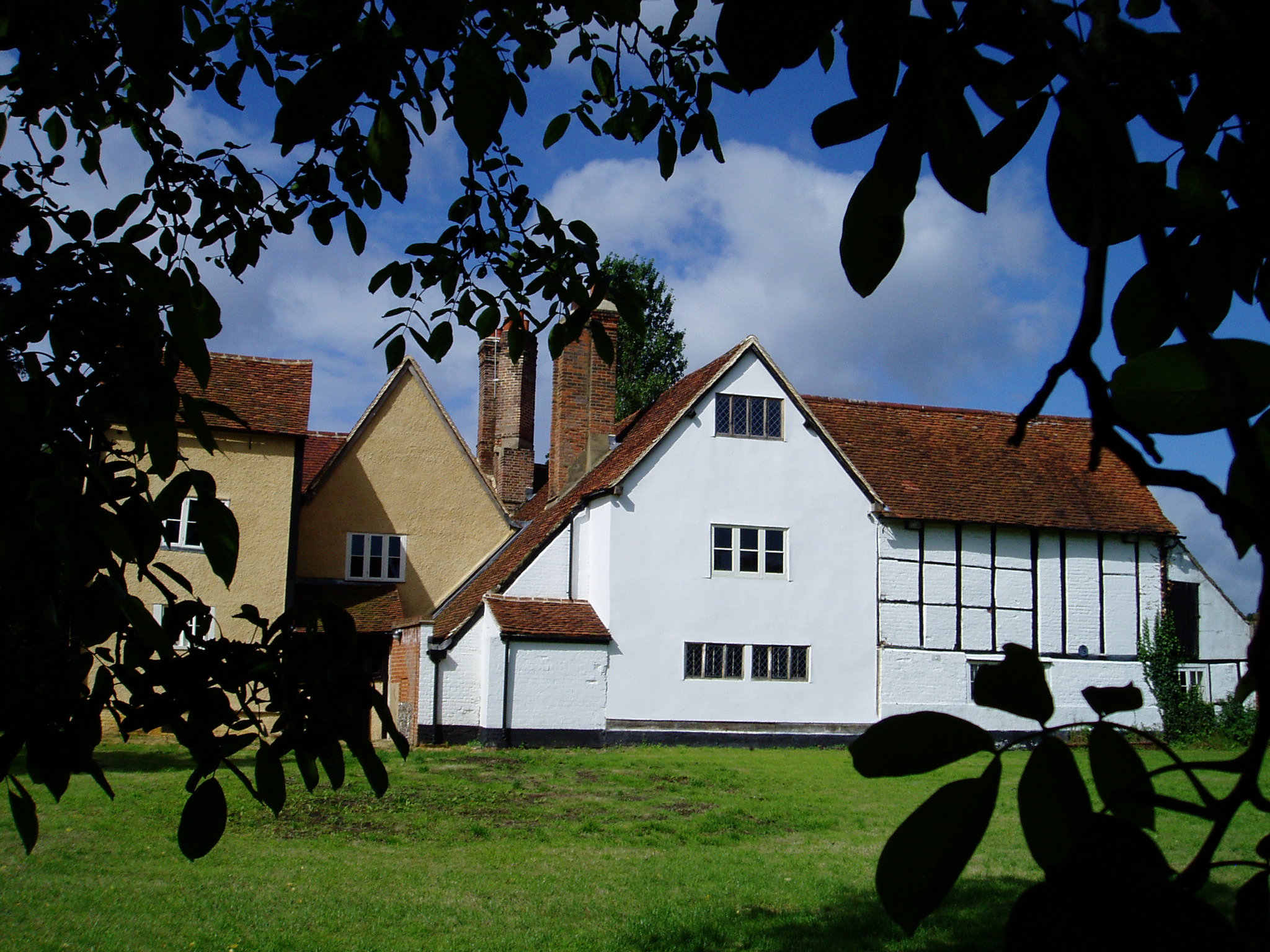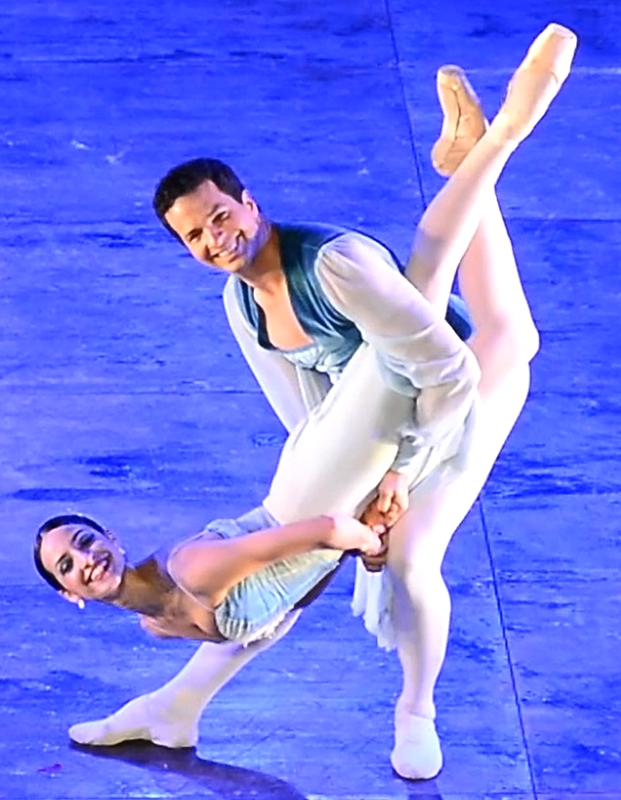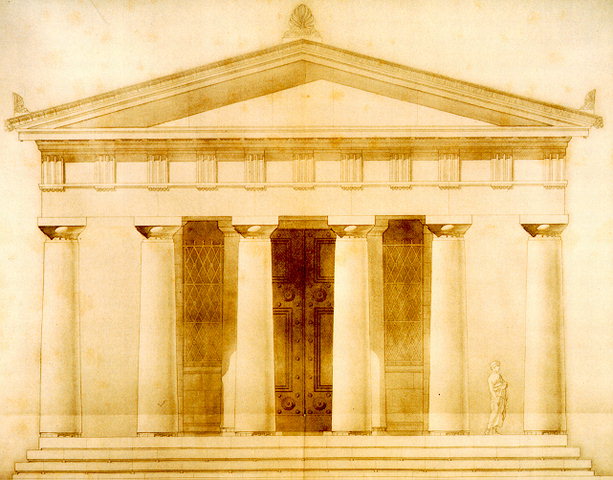|
Anna Rose O'Sullivan
Anna Rose O'Sullivan (born 16 April 1994) is an English ballet dancer and is a principal dancer at the Royal Ballet. Her promotion to principal dancer took effect in September 2021. Early life O'Sullivan was born in Harrow, London and raised in Ickenham. Her father is a construction contracts manager and her mother works in the NHS. She has two younger brothers and a younger sister. She started dance at age two, and performed with London Children's Ballet. She has also performed in musical theatre, and appeared as Cosette in ''Les Misérables'' and in ''Chitty Chitty Bang Bang'' on the West End. She entered The Royal Ballet School at age 11. Career O'Sullivan graduated into The Royal Ballet in 2012. In 2015, she danced her first major role, Clara in ''The Nutcracker''. Her performance was endorsed by Peter Wright, the production's choreographer. She was named First Artist in 2016, Soloist in 2017, First Soloist in 2019 and Principal in 2021. Her first principal role was Alice ... [...More Info...] [...Related Items...] OR: [Wikipedia] [Google] [Baidu] |
Harrow, London
Harrow () is a large town in Greater London, England, and serves as the principal settlement of the London Borough of Harrow. Lying about north-west of Charing Cross and south of Watford, the entire town including its localities had a population of 149,246 at the 2011 census, whereas the wider borough (which also contains Pinner and Stanmore) had a population of 250,149. The historic centre of Harrow was atop the Harrow Hill. The modern town of Harrow grew out at the foot of the settlement, in what was historically called Greenhill. With the arrival of the Metropolitan Railway in the 19th century, the centre of Harrow moved to Greenhill and it grew as the unofficial "capital" of the Metroland suburbia in the early 20th century; Harrow-on-the-Hill station is on one of the railway corridors between London and the Chilterns. Meanwhile, Harrow & Wealdstone station is on the West Coast Main Line and is the eighth oldest railway station, having opened in 1837 one and a ha ... [...More Info...] [...Related Items...] OR: [Wikipedia] [Google] [Baidu] |
Giselle
''Giselle'' (; ), originally titled ''Giselle, ou les Wilis'' (, ''Giselle, or The Wilis''), is a romantic ballet (" ballet-pantomime") in two acts with music by Adolphe Adam. Considered a masterwork in the classical ballet performance canon, it was first performed by the Ballet du Théâtre de l'Académie Royale de Musique at the Salle Le Peletier in Paris on 28 June 1841, with Italian ballerina Carlotta Grisi as Giselle. It was an unqualified triumph. It became hugely popular and was staged at once across Europe, Russia, and the United States. The ghost-filled ballet tells the tragic, romantic story of a beautiful young peasant girl named Giselle and a disguised nobleman named Albrecht, who fall in love, but when his true identity is revealed by his rival, Hilarion, Giselle goes mad and dies of heartbreak. After her death, she is summoned from her grave into the vengeful, deadly sisterhood of the Wilis, the ghosts of unmarried women who died after being betrayed by the ... [...More Info...] [...Related Items...] OR: [Wikipedia] [Google] [Baidu] |
Voices Of Spring
Voices or The Voices may refer to: Film and television * ''Voices'' (1920 film), by Chester M. De Vonde, with Diana Allen * ''Voices'' (1973 film), a British horror film * ''Voices'' (1979 film), a film by Robert Markowitz * ''Voices'' (1995 film), a film about British composer Peter Warlock * ''Voices'' (2007 film), a South Korean horror film * ''The Voices'', a 2014 horror comedy film * "Voices" (''Ghost Whisperer''), an episode of the TV drama Literature * ''Voices'' (Indriðason novel), a 2006 translation of a 2003 crime novel by Arnaldur Indriðason * ''Voices'' (Le Guin novel), a 2006 novel by Ursula K. Le Guin * ''Voices'' (magazine), a monthly English literary magazine 1919–1921 *''The Voices'', a 1969 book by Joseph Wechsberg *''The Voices'', a 2003 novel by Susan Elderkin * ''Voices'', the former journal of The Association for Feminist Anthropology Music * ''Voices'', former name of the a cappella group '' Voices in Your Head'' * ''Voices'' (Brit ... [...More Info...] [...Related Items...] OR: [Wikipedia] [Google] [Baidu] |
Tchaikovsky Pas De Deux
''Tchaikovsky Pas de Deux'' is a ballet choreographed by George Balanchine to a composition by Pyotr Ilyich Tchaikovsky originally intended for act 3 of ''Swan Lake'' (Op. 20, 1875–76). With costumes by Barbara Karinska and lighting by Jack Owen Brown, it was first presented by New York City Ballet at the City Center of Music and Drama, New York, on 29 March 1960. Robert Irving conducted the New York City Ballet Orchestra. The dancers were Violette Verdy and Conrad Ludlow. Background In 1877, Anna Sobeshchanskaya, ''prima ballerina'' of the Bolshoi Theater in Moscow, made her debut in the dual role of Odette/Odile in ''Swan Lake''. After three performances, she was so dissatisfied with the choreography of Julius Reisinger that she asked for new material for the role of Odile in act 3. With permission from the producers, she traveled from Moscow to Saint Petersburg to ask Marius Petipa, ballet master of the Imperial Theaters, to set a ''pas de deux'' for Odile and Siegfried to r ... [...More Info...] [...Related Items...] OR: [Wikipedia] [Google] [Baidu] |
La Bayadère
''La Bayadère'' ("the temple dancer") (Russian language, ru. «Баядерка», ''Bayaderka'') is a ballet, originally staged in four acts and seven tableaux by French choreographer Marius Petipa to the music of Ludwig Minkus. The ballet was staged especially for the benefit performance of the Russian ''Prima ballerina'' Ekaterina Vazem, who created the principal role of Nikiya. ''La Bayadère'' was first presented by the Mariinsky Ballet, Imperial Ballet at the Imperial Bolshoi Kamenny Theatre in St. Petersburg, Russia, on . From the first performance the ballet was universally hailed by contemporary critics as one of the choreographer Petipa's supreme masterpieces, particularly the scene from the ballet known as ''The Kingdom of the Shades'', which became one of the most celebrated pieces in all of classical ballet. By the turn of the 20th century, ''The Kingdom of the Shades'' scene was regularly extracted from the full-length work as an independent showpiece, and it has re ... [...More Info...] [...Related Items...] OR: [Wikipedia] [Google] [Baidu] |
Within The Golden Hour
''Within the Golden Hour'' is a one-act contemporary ballet choreographed by Christopher Wheeldon, composed by Ezio Bosso and featured music by Antonio Vivaldi. The ballet premiered in 2008 at the War Memorial Opera House, danced by the San Francisco Ballet. Production ''Within the Golden Hour'' was created as part of San Francisco Ballet's New Work Festival, which commissioned 10 choreographers to create works for the company. It is performed by 14 dancers, including three main couples, originated by Sarah Van Patten, Pierre-François Vilanoba, Maria Kochetkova, Joan Boada, Katita Waldo and Damian Smith. In 2016, The Royal Ballet in London performed ''Within the Golden Hour'' for the first time, featuring Beatriz Stix-Brunell, Vadim Muntagirov, Lauren Cuthbertson, Matthew Golding, Sarah Lamb and Steven McRae. A 2019 revival, also danced by The Royal Ballet, was filmed and released on a DVD, with Stix-Brunell, Muntagirov, Lamb, Francesca Hayward, Valentino Zucchetti ... [...More Info...] [...Related Items...] OR: [Wikipedia] [Google] [Baidu] |
After The Rain (ballet)
''After the Rain'' is a ballet choreographed by Christopher Wheeldon on New York City Ballet to music of Arvo Pärt, including ''Tabula Rasa'' (first movement, ''Ludus'') and ''Spiegel im Spiegel''. The ballet premiered on January 22, 2005, at the New York State Theater, Lincoln Center. The final ''pas de deux'' is commonly performed separately from the remainder of the ballet. Production Background ''After the Rain'' was commissioned as a part of New York City Ballet's annual New Combinations Evening, which honors the anniversary of George Balanchine’s birth with new ballets. It was the last ballet Wheeldon created for Jock Soto before Soto's retirement in June 2005. Choreography and music The first part of the ballet, set to Arvo Pärt's ''Tabula Rasa'', features three couples. The second part is a pas de deux originated by Soto and Wendy Whelan, which Wheeldon said it was a "love letter, this poem to both of them as artists." The music, Pärt's ''Spiegel im Spiegel'', was ... [...More Info...] [...Related Items...] OR: [Wikipedia] [Google] [Baidu] |
Jewels (ballet)
''Jewels'' is a three-act ballet created for the New York City Ballet by co-founder and founding choreographer George Balanchine. It premièred on Thursday, 13 April 1967 at the David H. Koch Theater, New York State Theater, with sets designed by Peter Harvey and lighting by Ronald Bates. ''Jewels'' has been called the first full-length abstract ballet. It has three related movements: ''Emeralds (ballet), Emeralds'', ''Rubies (ballet), Rubies'', and ''Diamonds (ballet), Diamonds'' (usually separated by intermissions). It can also be seen as three separate ballets, linked by their jewel-colored costumes. Balanchine commented: "The ballet had nothing to do with jewels. The dancers are just dressed like jewels." Each of the three acts features the music of a different composer: ''Emeralds'' is set to the music of Gabriel Fauré, ''Rubies'' to the music of Igor Stravinsky and ''Diamonds'' to music by Pyotr Ilyich Tchaikovsky. Costumes The costumes were created by Balanchine's long-tim ... [...More Info...] [...Related Items...] OR: [Wikipedia] [Google] [Baidu] |
Symphony In C (ballet)
''Symphony in C'', originally titled ''Le Palais de Cristal'', is a ballet choreographed by George Balanchine, to Georges Bizet's Symphony in C. The ballet was originally created for the Paris Opera Ballet, and premiered on July 28, 1947 at Théâtre National de l'Opéra. Production Georges Bizet (1838 – 1875) wrote Symphony in C when he was 17-year-old student, and the score was not found until 1933. Composer Igor Stravinsky informed choreographer George Balanchine about this discovery. In 1947, as a guest ballet master at the Paris Opera Ballet, Balanchine choreographed the ballet, then titled ''Le Palais de Cristal'', to "showcase for the talent of the whole company." Balanchine paid homage to Léo Staats, a French choreographer he admired. According to NYCB, Balanchine created the ballet within two weeks. The following year, he restaged the ballet for Ballet Society, under the title ''Symphony in C'', and this version was featured in New York City Ballet's first progra ... [...More Info...] [...Related Items...] OR: [Wikipedia] [Google] [Baidu] |
Les Patineurs (ballet)
''Les Patineurs'' (''The Skaters'') is a ballet choreographed by Frederick Ashton to music composed by Giacomo Meyerbeer and arranged by Constant Lambert. With scenery and costumes designed by William Chappell, it was first presented by the Vic-Wells Ballet at the Sadler's Wells Theatre, London, on 16 February 1937. It has been called "a paradigm of an Ashton ballet, perfectly crafted with a complex structure beneath the effervescent surface." Synopsis The ballet, in one act, depicts a Victorian skating party that takes place on a frozen pond on a winter's evening. A semicircle of arched trellises painted white separates the pond from the snowy woods behind. Suspended above are colourful Chinese lanterns, shedding light on the white canvas stage covering, simulating ice, and dimly illuminating the dark trees silhouetted against the starry night sky. The first skaters to enter are four couples dressed in matching brown jackets. They are soon joined by others: two girls wearing blu ... [...More Info...] [...Related Items...] OR: [Wikipedia] [Google] [Baidu] |
Dances At A Gathering
''Dances at a Gathering'' is a ballet choreographed by Jerome Robbins to music by Frédéric Chopin, with costumes designed by Joe Eula. The ballet premiered on May 22, 1969, at the New York State Theater, performed by the New York City Ballet. Production ''Dances at a Gathering'' is the first ballet Robbins created for the New York City Ballet (NYCB) in years, after he worked on Broadway theatre. He first planned to make a pas de deux for Patricia McBride and Edward Villella, but it was eventually expanded to five couples. According to NYCB, after George Balanchine saw 25 minutes of the ballet, he said: " ke more, make it like popcorn", so Robbins enlarged the ballet to an hour long. With costumes by Joe Eula and lighting by Thomas Skelton, the ballet had a gala preview on May 8, 1969, before premiering on May 22. Robbins dedicated the ballet to lighting designer Jean Rosenthal, who had died on May 1. Following the premiere, there were many speculations regarding the n ... [...More Info...] [...Related Items...] OR: [Wikipedia] [Google] [Baidu] |
Apollo
Apollo, grc, Ἀπόλλωνος, Apóllōnos, label=genitive , ; , grc-dor, Ἀπέλλων, Apéllōn, ; grc, Ἀπείλων, Apeílōn, label=Arcadocypriot Greek, ; grc-aeo, Ἄπλουν, Áploun, la, Apollō, la, Apollinis, label=genitive, , ; , is one of the Twelve Olympians, Olympian deities in Ancient Greek religion, classical Greek and Ancient Roman religion, Roman religion and Greek mythology, Greek and Roman mythology. The national divinity of the Greeks, Apollo has been recognized as a god of archery, music and dance, truth and prophecy, healing and diseases, the Sun and light, poetry, and more. One of the most important and complex of the Greek gods, he is the son of Zeus and Leto, and the twin brother of Artemis, goddess of the hunt. Seen as the most beautiful god and the ideal of the ''kouros'' (ephebe, or a beardless, athletic youth), Apollo is considered to be the most Greek of all the gods. Apollo is known in Greek-influenced Etruscan mythology as ' ... [...More Info...] [...Related Items...] OR: [Wikipedia] [Google] [Baidu] |




